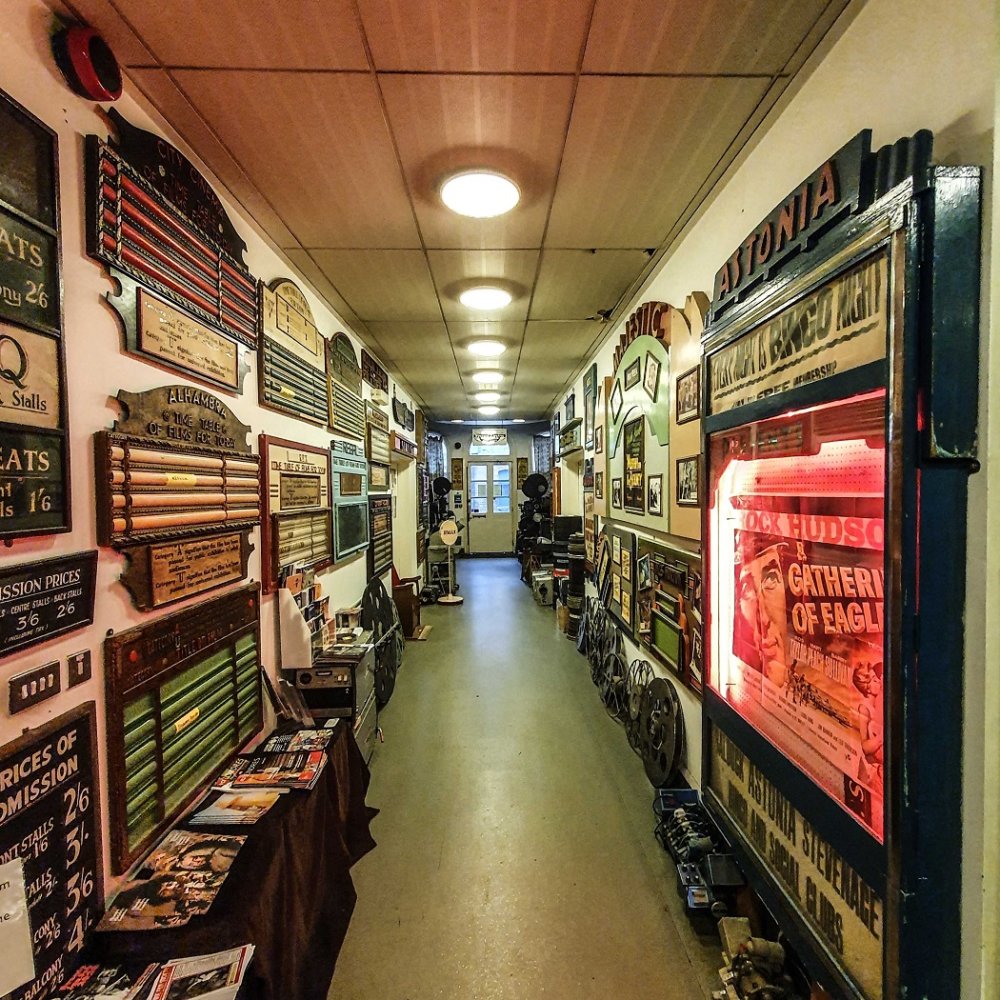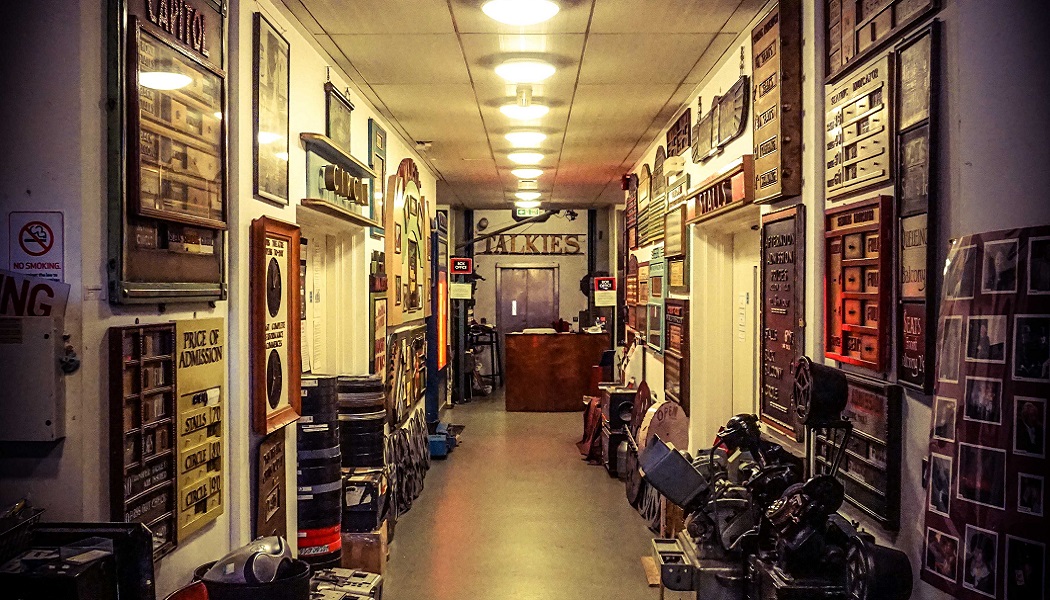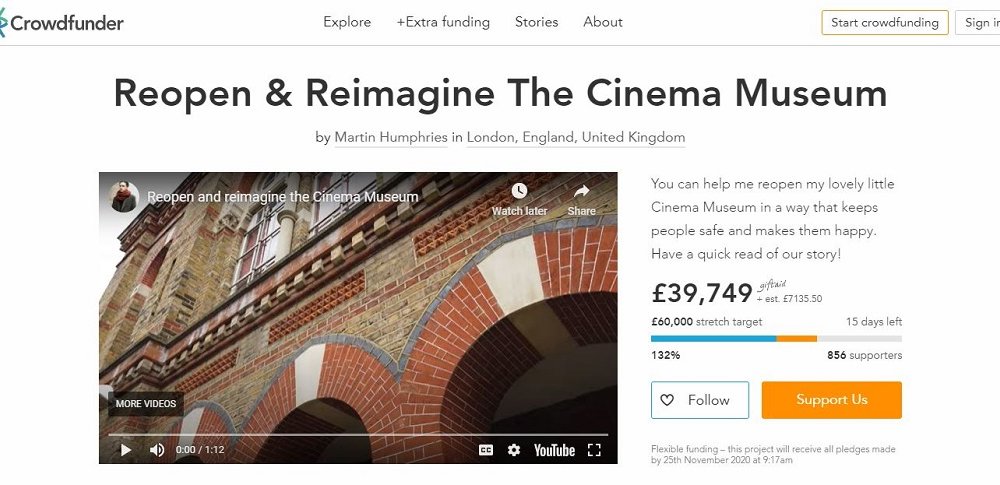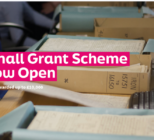Given the constant flurry of fawning social media posts thanking the government for financial support via the Culture Recovery Fund, it would be easy to grow complacent regarding those institutions that were either ineligible or not selected for a timely cash boost.
One such venue left feeling even more independent than usual can be found in the London borough of Lambeth.
The Cinema Museum, established three and a half decades ago by Martin Humphries and Ronald Grant, is at once a visitor attraction, heritage site and sporadic cinema. While this means it carries broad appeal to a range of audiences, straddling several sectors has posed a problem when emergency pandemic funding programmes are staunchly siloed.
The venue, a Grade II Listed former Victorian workhouse that counts Charlie Chaplin among its previous residents, is now crying out for public support via a Crowdfunder page – with great success thus far.
Katharine Ford, the institution’s business development lead and deputy director of 15 years, explored several potential funding avenues in the weeks and months following the first UK-wide lockdown in March. All ultimately led to disappointment.
Every strand of the Culture Recovery Fund pursued resulted in a different reason for ineligibility. The sole criteria it could meet – the second installment administered by Arts Council England – fell down due to the minimum £50,000 bid mandated by the programme.
“We need around £70,000 in total but only £40,000 would have been covered by that fund. We would have had to lie about what we needed some of the money for in order to be eligible. Given how badly we knew this money was needed across the sector, there was no way we could or would have done that,” Ford tells Advisor.

It strikes the Cinema Museum’s deputy director that having always been “run on a shoestring” and never having accrued any debts actually counted against its pursuit of support. “When you’re a small organisation that’s run very simply it would be incredibly difficult to make claims for amounts you don’t need.”
The site ordinarily must raise around £120,000 each year to cover its day-to-day running costs alongside those of its programming. In 2020, with most events having been cancelled, core spend is between £60,000 and £70,000.
“We’ve never asked for a bean before. Never has a penny of our core cost been covered by public money. We’ve always tried not to be a financial burden.”
Despite having found sourcing support difficult, there is no bitterness towards peers who have gleefully scooped up tens of thousands from the Treasury’s coffers in recent weeks. “We’re really pleased all that money’s out there and we’re really pleased other organisations are getting it,” Ford states. “Like everyone in this marvellous sector, we want all museums to thrive.”
Nevertheless, one small gripe she holds is that funding decisions are now made in a much less targeted way than years gone by.
“Museum development officers are, and always have been, magnificent. They’re one of the many things that set this sector apart. I’ve never met a stupid one!” she quips. “The team that support us from the Museum of London, for instance, are absolutely brilliant.”
A lot of funding has, however, seeped out of their control and up to a ‘top level’ at which decisions have become much more of a “paper exercise” than was previously the case, Ford continues. “In the past you’d pick up the phone, ask them about a fund and they’d instantly tell you whether it would work for you – they knew you and your museum inside out.”
This transition has, the deputy director fears, seen more money directed to “well-resourced museums with full-time fundraising employees in-house”.
“When those who have the most receive the most it does hamper the growth of the small, independent sites,” she states, adding once again that she in no way begrudges museums of any size receiving the maximum support possible, particularly at this difficult time.


Having endured a Groundhog Day scenario of funding ineligibility, the organisation opted to change approach. A matter of weeks in and this undoubtedly looks to have been a fruitful move.
“We only need a relatively modest sum of money and, after talking it through with the trustees, we came to the conclusion that it would be less risky and less time-consuming to stop seeking a funding programme and leap into the world of crowdfunding,” Ford recalls.
An initial £30,000 was hit on 28th October – four weeks ahead of schedule – and so a stretch target of £60,000 has now been set. The fund closes at 9am on November 25th, at which point the museum will know just how close it is to its ultimate goal.

The vital influx of cash from public donations, twinned with the hope of a return to a greater degree of normality next financial year, will enable the Cinema Museum to return to its entirely self-sufficient social enterprise model.
Even with an ongoing dispute regarding purchasing the site in order to move away from a perpetually insecure tenure, the team will just be grateful to get back doing what they love.
“Part of the importance, value and charm of the small independent museums is that they’ve all emerged for different reasons; from different passions, collections and people who have come together to celebrate, remember of challenge something,” Ford concludes. “Whatever we can do to preserve this part of the sector must be done.”











